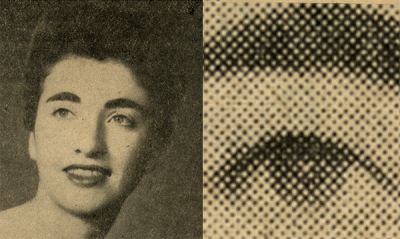
A close look at the newspaper photograph reveals that the range of shades is made up of a combination of black dots. In dark areas, the dots are large and merge so that almost none of the white paper shows through. In lighter areas the dots are tiny and surrounded by large expanses of white.
The process of reproducing photographs as a dotted picture is called half tone. The continuously varying shades in a photograph are converted into a pattern of different sized dots by a method called screening. The photograph to be reproduced is it self photographed through a screen which is placed in contact with the film. It consist of a piece of transparent film carrying a diagonal pattern of lines.
What is the use a fairly coarse screen to reproduce pictures on standard newsprint. The screen has about 2 to 3 lines per millimetre and when printed, results in the same number of dots per millimetre.
Light reflected from the photograph passes through the screen and is broken up into areas of varying brightness. These produce a pattern of dots when the film is developed. The result is a negative image. Later processing produces a positive image in which the dark areas of the picture are represented by large dots and the light areas by small ones.
Picture Credit : Google

